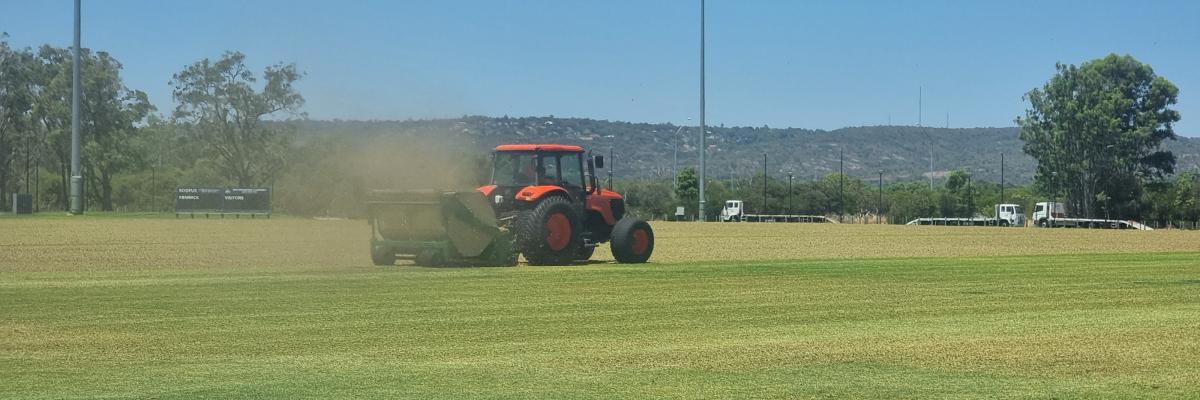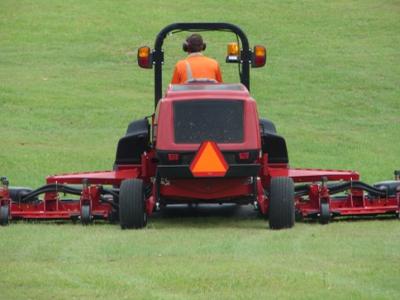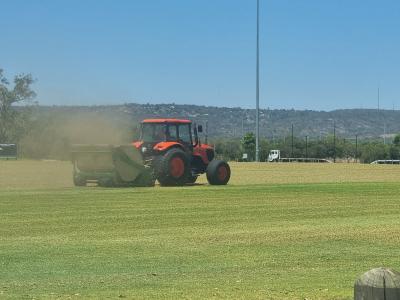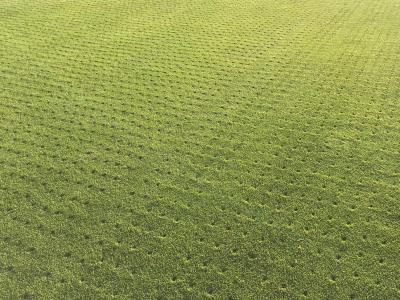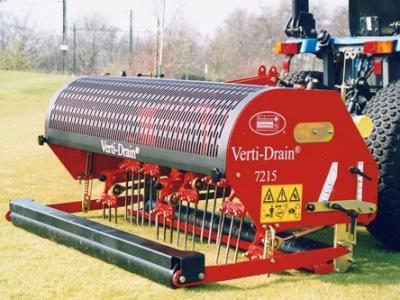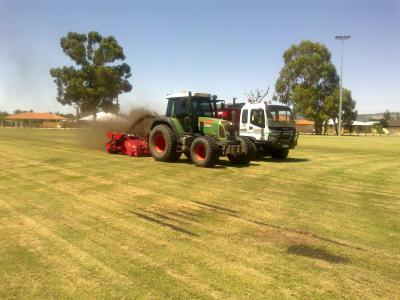Why renovate turf playing surfaces in September?
- Spring renovations remove the excess mat or thatch layer that accumulates as the grass plant grows. The mat layer is essential for injury prevention during winter by providing a cushioning layer for bodies being tackled.
- Spring renovation undertakes aeration through verti-mowing or scarifying, low mowing and verti-draining (coring) to a depth of 150mm. This increases water penetration for the grass plant and encourages deep root growth along with relieving soil compaction.
- The height of cut is lowered from the winter height of 25 - 35mm, to the summer height of 10 - 20mm and top dressing is completed as required.
- This process transforms the playing surface from being suitable for AFL or soccer, to being ideal for small-ball sports like cricket, baseball, softball and teeball. Summer sports required a thinner or shorter turf layer to ensure a smoother, more consistent ball-rolling surface.
Challenges that can impact renovations:
- Club finals, creating smaller timeframes for renovations.
- Clubs requesting early access to grounds, creating unrealistic timeframes for renovations to be completed.
- Expanded turf dormancy due to cold weather conditions, which prolongs turf recovery time.
- Wet weather delaying the sweeping component.
- Machinery break downs.
- Staff shortage (both City and contractor).
- Events without a booking appearing on sports grounds.
- Product supply shortage (fertiliser/pesticides and wetting agents).
Consequences of improper recovery time after renovations
The renovation process places the grass under increased stress, forcing it to focus its energy to grow and recover. If there isn't enough time for the grass to recuperate before ground activity resumes, the renovation process can be compromised. This may result in diminished turf coverage, an uneven playing surface and divots.
